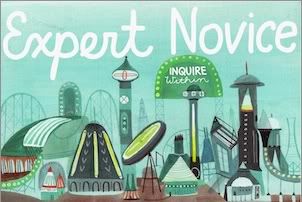A little while ago, I noncommittally insinuated that at some point, someday, in the future, I would maybe post more of my Adventures in Historical Ephemera. And I quote: "Maybe next week I will talk about my research on fallout shelters and consumerism!"
Well, okay. In retrospect, that was pretty committal.
So I guess it's not "next week" anymore, but I don't know. Maybe it's all this deceptive spring air, or the sunlight in Cambridge that is actually made of icicles, but I'm feeling adventurous. Below, I've posted the first two paragraphs from a paper I wrote last year: "Your Life May Depend On It: Selling Americans on Fallout Shelters, 1950-61." As usual, if you are brave and unwitting enough to actually want to read the whole thing, all it takes is one email: diana (dot) kimball (at) gmail (dot) com.
The 1950s in the United States marked the decade when Americans became full-fledged consumers. World war and the invention of the atomic bomb had stained the 1940s with an atmosphere of apocalyptic fear. After the United States abruptly ended World War II in 1945 by dropping the atomic bomb over Hiroshima, Americans slowly withdrew their gaze from the world stage to the home front—nevertheless keeping a watchful eye on the new specter of the atomic bomb. In the wake of such anxiety and uncertainty, citizens of the 1950s took comfort in their families and homes, while retreating to the suburbs in droves. According to historian Elaine Tyler May, “investing in one’s home, along with the trappings that would presumably enhance family life, was seen as the best way to plan for the future.” In their pursuit of the ideal nuclear family home, Americans did their best to buy themselves safety, comfort, and peace of mind....and so it continues, for another 10 pages. The Douglas Fir Plywood Association makes a cameo. As does Coca-Cola. I'm saving the good parts, see, for the two people in the world who will actually be interested in this.
And yet, as atomic power proliferated in both the United States and the Soviet Union, enabling the Cold War to creep onto the scene, American families faced constant reminders that their suburban strongholds could not protect them from the fallout of a potential atomic attack. Sensing a market for assured protection, popular magazines and independent contractors began to sell consumers on the idea of the fallout shelter, a potentially priceless addition to any home. Meanwhile, realizing that in the atomic age, “the whole world is a battlefield,” the government pushed single-family fallout shelters in radio spots and pamphlets—largely in an effort to convince Americans to take on the expense of civil defense for themselves. Whether made of concrete, steel, wood, or dirt; whether buried in the backyard, or tucked away in the basement, the basic premise of the fallout shelter was that it would protect families from deadly radiation and shrapnel in the event of an atomic attack. Between 1950 and 1961 the government, the media, and eager companies sold Americans on the idea of fallout shelters—not only as concrete commodities, but also as vessels for safety, family solidarity, and, above all, consumer goods...
It's sort of like bribery. Only, with more reading. And less money.




1 comment:
I've enjoyed reading your posts. Strange enough, I arrived at your blog via a google search for HBS' 2+2 program. Seeing that you're at Harvard now and have been relatively quite about the whole matter I was wondering if you had uncovered any updates? Any news would be much appreciated.
Post a Comment